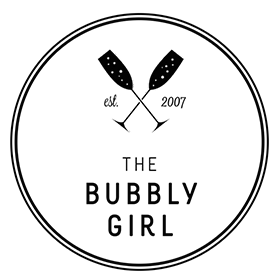
German actress Bridget von Hammersmark (Diane Krueger) drank Perrier-Jouet champagne in this fateful scene at the bar La Louisiane in the movie Inglourious Basterds.(Courtesy photo)
I like a shoot-em-up action flick as much as the next Bubbly Girl, and I wasn’t disappointed with Inglourious Basterds. Of course, I could have done without some of the gore, but that’s to be expected from a Quintin Tarantino movie.
I was pleasantly surprised though to glimpse Perrier-Jouët champagne — the anemone flower painted bottle known as the Cuvée Belle Epoque — in a few scenes of the movie. The first I recall was at a restaurant where the Jewish heroine Shoshanna (Mélanie Laurent) dealing with the unwelcome attention of German war hero Frederick (Daniel Brühl) and finds herself being treated to fancy lunch with Nazi Joseph Goebbels. It shows up again in a fateful scene at a bar called La Louisiane and once more at the end of the movie, when Lt. Aldo Raine (Brad Pitt) and some of his men get dressed up in tuxes to take in a movie premiere.
Especially given the circumstances of this first scene and the others, there’s a feeling of desperate fin de siecle decadence, watching people gaily drink champagne from beautiful bottles as their country is overrun by invading troops.
Of course, while Inglourious Basterds is fiction, champagne did play a role in both World War I and II. Champagne was both a symbol of French national pride and a valuable commodity that the German armies were quick to loot, as detailed in the book “Wine & War: The French, The Nazis and the Battle for France’s Greatest Treasure” by Donald Kladstrup. They even appointed wine fuhrers who over saw the selection and storage of wines stolen from France. Some winemakers built false walls in their cellars to hide their precious bottles from the invading armies.

This gate adorned with the anemone flower logo in metal leads to the caves where Perrier Jouet champagne is stored during aging. (Photo by Maria C. Hunt)
Those same caves also served as prisons during World War I. Visiting Maison Belle Epoque, the gorgeous art private deco museum that serves as the hospitality house for Perrier-Jouët this summer, I got to tour the caves with winemaker Herve Deschamps. We came across inscriptions carved into the walls by mostly Italian men who were imprisoned there.

This inscription with the name Masse, the year 1911 and 15F - perhaps a regiment - were left behind by an Italian soldier imprisoned in the caves under Perrier Jouet during World War I.(Photo by Maria C. Hunt)
War and champagne makes me think of one cocktail from my new book The Bubbly Bar: Champagne & Sparkling Wine Cocktails for Every Occasion in particular: the Kir Royale. A quintessentially French combination of creme de cassis and champagne, the drink is named after Felix Kir. Besides being a priest who later became the mayor of Dijon, France Kir is celebrated as a heroic figure in the French Resistance.
Isn’t it amazing how many stories can be told through a glass of champagne?

